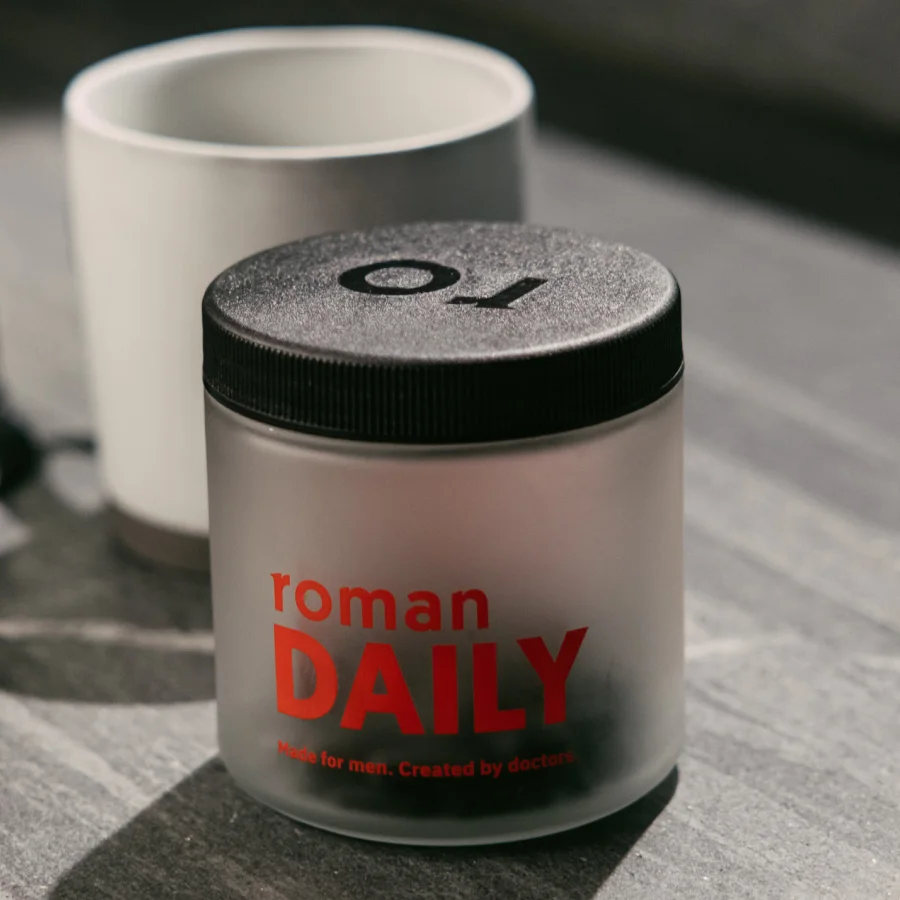15 foods filled with magnesium

Reviewed by Mike Bohl, MD, MPH, ALM,
Written by Linnea Zielinski
last updated: Oct 19, 2019
5 min read
Here's what we'll cover
Magnesium doesn’t get its due. Want to build muscle? This small but mighty mineral is required for over 600 enzymatic reactions in the body, including protein synthesis and muscle function.
Trying to control blood sugar levels? Magnesium plays an integral part in energy production and blood sugar regulation in people with type 2 diabetes. Essentially, if you want to feel like a healthy functioning human being, you need magnesium. And you might not be getting enough.
In fact, we can’t underscore enough the importance of this mineral. It’s essential for heart health as it works in tandem with calcium, relaxing the heart muscles after calcium makes them contract, generating heart contractions.
This same relationship controls other muscle contractions throughout your body. It may lower blood pressure, decrease your risk of heart disease, and improve sleep quality (Reffelmann, 2011; Wienecke, 2016).
Luckily, if you’re already trying to eat a healthy, balanced diet that’s low in processed foods, you’re well on your way to meeting your recommended dietary allowance (RDA) of 400–420 mg for adult men and 310–320 mg for adult women (NIH, 2019).
But though many common health foods are good sources of magnesium, one study found that 68% of adults in the United States were not hitting their RDA. It’s all too easy to develop a magnesium deficiency. A diet rich in processed foods certainly doesn’t help (King, 2005).
For example, in one study, there was an 85% difference in the amount of magnesium in whole kernels of yellow maize (127 mg) and degermed yellow flour (18 mg), indicating that the processing of food can remove a significant portion of its magnesium content.
Foods rich in magnesium
If you’re not sure where to start for food sources of magnesium, try to add the foods on this list to your daily diet. Dietary supplements are great, it’s always a good idea to try to get your vitamin and mineral needs through whole food sources when possible.
Add a couple of these foods to each meal, and you’ll quickly hit your RDA in this mineral without the use of magnesium supplements (USDA, 2019).
1. Spinach and leafy greens
You don’t have to like kale to squeeze magnesium-rich greens into your daily menu; leafy vegetables such as spinach, collard greens, swiss chard, mustard greens, and turnip greens are also good sources.
One cup of loosely packed spinach (about 25 g) contains 19.8 mg of magnesium. For reference, around 50 g of spinach is typical in a salad and will account for 39.5 mg of magnesium. Just remember to add a squeeze of lemon or orange segments to that salad; the vitamin C helps your body absorb the iron in this leafy green (Hurrell, 2010).
2. Nuts
Nuts have earned more pantry space since the start of the keto trend thanks to their healthy fats.
Unlike the keto diet, you’ll want to reach specifically for almonds, cashews, and Brazil nuts for magnesium content. Grab 1 ounce of almonds (about 22 kernels) for 79.1 mg of magnesium, cashews (about 18) for 73.7 mg, or Brazil nuts (4-5 kernels) for 105 mg magnesium.
3. Whole wheat
Nutrients and minerals like magnesium are mostly found in the germ, which gets stripped away when grains are refined.
Look for bread that’s made with 100% whole wheat flour, as some as made with a combination of whole and refined flours. If you get true whole wheat bread, you’ll also get 27 mg of magnesium in a regular slice.
Make it even easier for yourself by cooking your whole grains. Soaking them before cooking will help reduce phytic acid content so your body can better absorb their nutrients. Good choices for magnesium include quinoa (64 mg in 100 g cooked), buckwheat (51 mg in 100 g cooked), brown rice (39 mg in 100 g cooked), and oatmeal (37.7 mg in 1 ounce dry).
4. Dark chocolate
Cocoa is seriously healthy, as long as it’s seriously dark chocolate you’re eating.
This treat packs a larger percentage of your RDA of magnesium (64 mg) into a 1-ounce (28 g) serving in addition to copper, manganese, iron, and prebiotic fiber that feeds your healthy gut bacteria. For most bars, that’s around one serving (Tzounis, 2011).
But to get these benefits, you’ll need to limit your bar search to those with at least 70% cocoa and minimal sugar, otherwise, you’ll be getting extra calories along with the nutrients.
5. Legumes
If you were looking for peanuts before, this is where you’ll find them. Legumes like the beloved peanut as well as beans (black beans, kidney beans, etc.), lentils, and chickpeas are good sources of this mineral. Make them the base of a meal for an easy way to hit your RDI.
Choose 100 g cooked chickpeas for 48 mg, lentils for 36 mg, or black beans for 70 mg of magnesium. Top your oatmeal or whole-wheat toast with one tablespoon of peanut butter for an additional 26.9 mg.
6. Edamame
Yes, it’s technically a legume, but it’s worth highlighting. Start your meal with a snack of 1 cup of edamame with shells on, and you’ll get 59.5 mg magnesium before you dig into your entree. More on this further down the list, but a sushi dinner is a great way to get magnesium into your day as long as you choose the right fish.
Alternatively, soy milk is another excellent way to put this magnesium-rich food to work to hit your daily needs of this vital mineral. One cup of nonfat soy milk will kick off your day with 24.4 mg of magnesium.
7. Tofu
Another soy product, tofu, is an easy way for vegetarians and vegans to ensure they’re keeping their intake of magnesium up. Add 100 g of raw firm tofu to your lunch or dinner for 58 mg of the crucial mineral, but please cook it first.
If you’re really struggling with low magnesium levels, you can blend soft tofu with three other foods on this list: bananas, peanut butter, and Greek yogurt for a mineral-rich smoothie.
8. Avocado
It costs extra at Chipotle, but it’s well worth the cost. Guacamole and its main ingredient avocado are a rich source of magnesium. One California avocado (the ones with the black skin) packs in 39.4 mg of the heart-healthy mineral.
9. Greek yogurt
It’s a magnesium food made for the morning. Start your day with protein-rich low-fat Greek yogurt for 22 mg of magnesium in one small 200 g container. And at only 146 calories (depending on the brand), you can easily top your yogurt with a mineral-rich banana to ensure your breakfast has enough magnesium.
10. Seeds
A sprinkle of sunflower seeds or pumpkin seeds here and there may not seem like enough to help your nutrient intake, but it’s more than enough to hit your daily recommended value.
Just 1 ounce of sunflower seeds (weighed with hulls) on your morning yogurt adds 19.4 mg of magnesium to your meal. Sprinkle half an ounce of pumpkin seeds on your salad for a whopping 84 mg of the vital mineral before you even count the salad base.
11. Bananas
Although the ideal post-workout meal contains protein, a banana is a good pairing. Magnesium cues muscle relaxation, which can help with muscle cramping after a weightlifting workout. Throw a medium-sized banana in your gym bag to enjoy 31.9 mg of this crucial mineral when you wrap up your sweat session.
12. Fatty fish
Although not every fish at the sushi restaurant would make the list of foods high in magnesium, you do have quite a few to choose from.
Fatty fish such as salmon, halibut, and mackerel are rich in not only omega-3 fatty acids and vitamin D but also this important mineral. A 100 g serving of sockeye salmon will get you 30 mg magnesium. Make it halibut for 26 mg and mackerel for 60 mg.
13. Sweet corn
It’s not just leafy vegetables that are good sources of magnesium. Low-carb diets have given starchy vegetables a lousy reputation, but one medium ear of sweet corn can get you 31.9 mg of the mineral.
14. Broccoli
There’s no questioning the health benefits of broccoli, but we’re expanding the list by mentioning that it’s an excellent magnesium food. Keep your heart healthy with one small stalk of broccoli, which packs not only 5 g of filling fiber but also a significant amount of magnesium: 29.4 mg for just 50 calories.
15. Peas
Peas may feel like a dinner side straight out of the 50s, but there’s nothing to write off about their health-boosting benefits. Try serving your salmon with 100 g of cooked green peas for a magnesium-rich pairing; the peas alone will give you 39 mg.
DISCLAIMER
If you have any medical questions or concerns, please talk to your healthcare provider. The articles on Health Guide are underpinned by peer-reviewed research and information drawn from medical societies and governmental agencies. However, they are not a substitute for professional medical advice, diagnosis, or treatment.
Hurrell, R., & Egli, I. (2010). Iron bioavailability and dietary reference values. The American Journal of Clinical Nutrition, 91(5), 1461s–1467S. doi: 10.3945/ajcn.2010.28674f. Retrieved from https://pubmed.ncbi.nlm.nih.gov/20200263/
King, D. E., Mainous, A. G., Geesey, M. E., & Woolson, R. F. (2005). Dietary Magnesium and C-reactive Protein Levels. Journal of the American College of Nutrition, 24(3), 166–171. doi: 10.1080/07315724.2005.10719461. Retrieved from https://pubmed.ncbi.nlm.nih.gov/15930481/
National Institutes of Health: Office of Dietary Supplements. (2019, October 11). Magnesium: Fact Sheet for Health Professionals. Retrieved from https://ods.od.nih.gov/factsheets/Magnesium-HealthProfessional/
Reffelmann, T., Ittermann, T., Dörr, M., Völzke, H., Reinthaler, M., Petersmann, A., & Felix, S. B. (2011). Low serum magnesium concentrations predict cardiovascular and all-cause mortality. Atherosclerosis, 219(1), 280–284. doi: 10.1016/j.atherosclerosis.2011.05.038. Retrieved from https://pubmed.ncbi.nlm.nih.gov/21703623/
Tzounis, X., Rodriguez-Mateos, A., Vulevic, J., Gibson, G. R., Kwik-Uribe, C., & Spencer, J. P. (2011). Prebiotic evaluation of cocoa-derived flavanols in healthy humans by using a randomized, controlled, double-blind, crossover intervention study. The American Journal of Clinical Nutrition, 93(1), 62–72. doi: 10.3945/ajcn.110.000075. Retrieved from https://pubmed.ncbi.nlm.nih.gov/21068351/
U.S. Department of Agriculture (USDA). (2019, April 1). FoodData Central: Spinach, raw. Retrieved from https://fdc.nal.usda.gov/index.html
Wienecke, E., & Nolden, C. (2016). Long-term HRV analysis shows stress reduction by magnesium intake. Fortschritte Der Medizin, 158(Suppl 6), 12–16. doi: 10.1007/s15006-016-9054-7. Retrieved from https://pubmed.ncbi.nlm.nih.gov/27933574/










